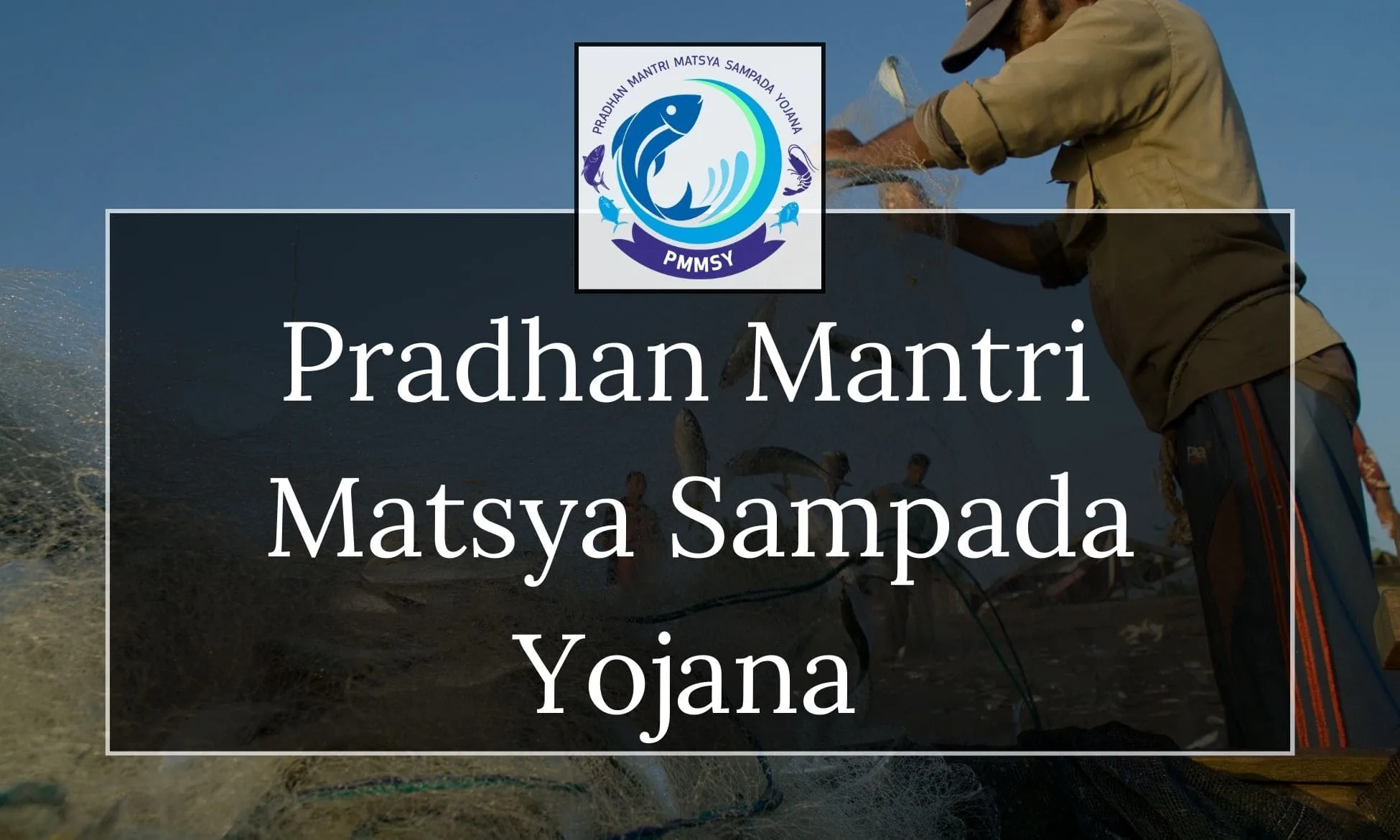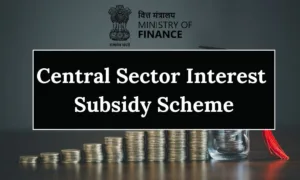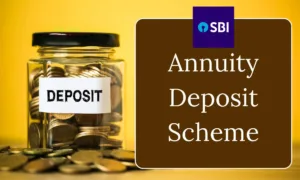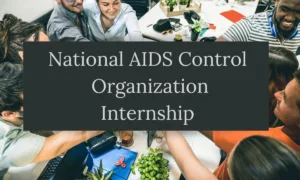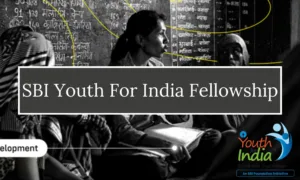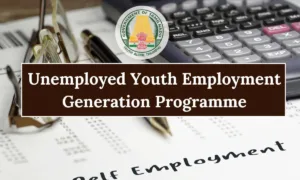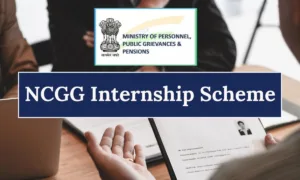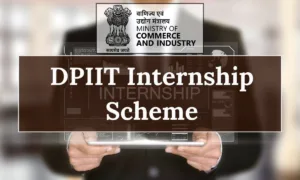The fisheries sector in India is a crucial component of the nation’s socio-economic landscape, playing a pivotal role in food security, employment, and economic growth. With approximately 16 million individuals engaged in fish farming and fishing, the sector extends its impact throughout the value chain, contributing significantly to both national and agricultural gross value added. The ‘Blue Revolution’ initiative, implemented from 2015-16 to 2019-20, witnessed a substantial rise in local fish production and productivity. Furthermore, the Ministry of Fisheries, Animal Husbandry and Dairying launched the Pradhan Mantri Matsya Sampada Yojana in September 2023. In this article, we are going to talk about the scheme in detail.
What is Pradhan Mantri Matsya Sampada Yojana ?
The Pradhan Mantri Matsya Sampada Yojana was introduced by the Department of Fisheries within the Ministry of Fisheries, Animal Husbandry, and Dairying to foster the ecologically sustainable, economically viable, and socially inclusive development of India’s fisheries sector.
PMMSY aims to catalyze a Blue Revolution by fostering the responsible and sustainable growth of the fisheries industry in India, with a comprehensive investment of ₹20,050 crore. This initiative spans across all States and Union Territories and is slated for implementation over a five-year period, from the fiscal year 2020-21 to 2024-25.
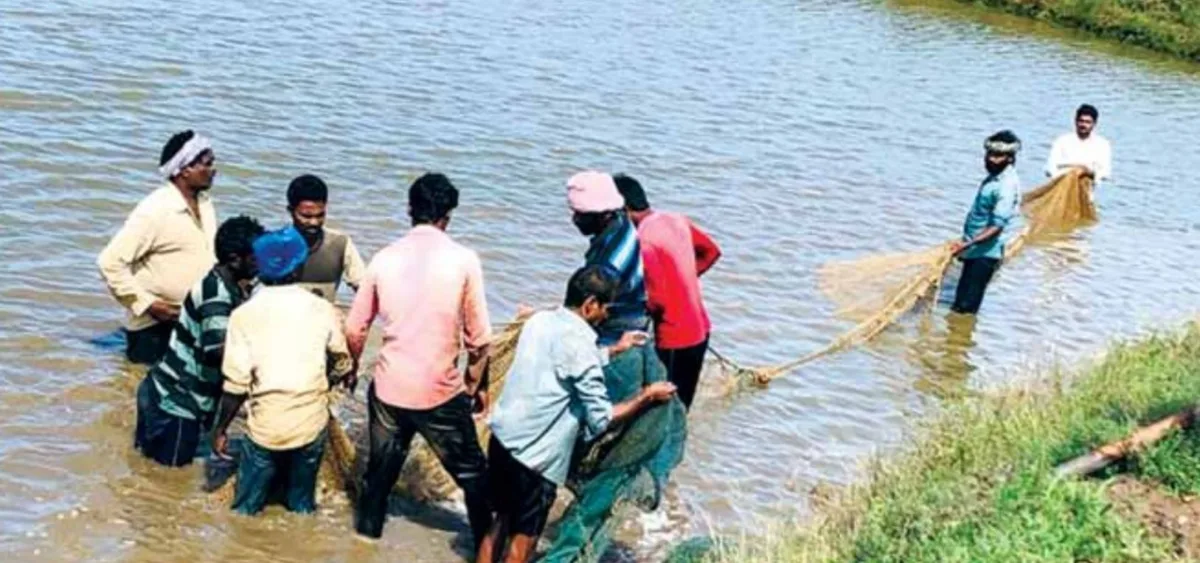
In the Union Budget for 2023-24, a new sub-scheme Pradhan Mantri Matsya Kisan Samridhi Sah-Yojana (PM-MKSSY): Kunder PMMSY has been introduced, allocating an investment of Rs.6,000 crore. This sub-scheme is designed to support fish vendors, fishermen, and micro and small enterprises by enhancing value chain efficiencies and expanding market opportunities.
| Pradhan Mantri Matsya Sampada Yojana Key Highlights | |
| Pradhan Mantri Matsya Sampada Yojana Launch Date | September 10, 2020 |
| Pradhan Mantri Matsya Sampada Yojana Official Website | PMMSY Official Website |
| Pradhan Mantri Matsya Sampada Yojana Objective | To foster the ecologically sustainable, economically viable, and socially inclusive development of India’s fisheries sector. |
| Pradhan Mantri Matsya Sampada Yojana Budget | ₹20,050 crore |
| Pradhan Mantri Matsya Sampada Yojana Tenure | 5 years |
| Pradhan Mantri Matsya Sampada Yojana Duration | 2020-21 to 2024-25. |
| Pradhan Mantri Matsya Sampada Yojana Under which Ministry | Ministry of Fisheries, Animal Husbandry & Dairying |
| Pradhan Mantri Matsya Sampada Yojana Department | Department of Fisheries |
| Pradhan Mantri Matsya Sampada Yojana Helpline Number | 1800-425-1660 |
Pradhan Mantri Matsya Sampada Yojana Objective
- Unlock the potential of the fisheries sector in a sustainable, responsible, inclusive, and equitable manner.
- Increase fish production and productivity through the expansion, intensification, diversification, and efficient utilization of land and water resources.
- Modernize and strengthen the entire value chain, focusing on post-harvest management and quality improvement.
- Strive to double the incomes of fishers and fish farmers while creating meaningful employment opportunities.
- Boost the contribution of the fisheries sector to Agricultural Gross Value Added (GVA) and exports.
- Prioritize the social, physical, and economic security of fishers and fish farmers.
- Establish a robust fisheries management and regulatory framework to ensure the sector operates efficiently and responsibly.
Why Need Pradhan Mantri Matsya Sampada Yojana ?
The Pradhan Mantri Matsya Sampada Yojana (PMMSY) addresses the critical importance of fisheries and aquaculture in India, playing a vital role in food security, nutrition, employment, and income. Approximately 16 million individuals are engaged in fish farming and fishing at the primary level, with nearly twice that number involved throughout the value chain. In the 2018-19 fiscal year, the fisheries sector contributed 1.24% to the national gross value added (GVA) and 7.28% to agriculture GVA.
The marine fishing resources, estimated at 4.41 million tons, cover 8,118 kilometers of India’s coastline, highlighting the sector’s significant reach. To optimize fish production, the focus is on integrated fish farming and diversification, particularly in areas like old water, rivers, and brackish water fisheries.
The government previously launched the ‘Blue Revolution’ spanning from 2015-16 to 2019-20, resulting in a noteworthy increase in local fish production from 10.26 million metric tonnes (MMT) in FY15 to 13.75 MMT in FY19. Fish productivity also rose from 2.3 tonnes per hectare in FY15 to 3.3 tonnes per hectare in FY19.
The fisheries sector has been a crucial contributor to India’s foreign exchange earnings, with the country emerging as a leading seafood exporter. In FY19, marine product export earnings reached Rs. 465.89 billion (US$ 6.73 billion), primarily driven by advancements in brackish water aquaculture. By FY20, aquaculture products constituted 70–75% of the nation’s total fishery exports.
Pradhan Mantri Matsya Sampada Yojana Key Targets
- Achieve a fish production of 22 million metric tons by 2024-25, a significant increase from the 2018-19 level of 13.75 million metric tons.
- Improve aquaculture productivity to 5 tons per hectare, surpassing the current national average of 3 tons.
- Increase domestic fish consumption from 5 kg to 12 kg per capita.
- Raise the contribution of the fisheries sector to Agriculture Gross Value Added (GVA) to approximately 9% by 2024-25, up from 7.28% in 2018-19.
- Double export earnings to ₹1,00,000 crores by 2024-25, compared to ₹46,589 crores in 2018-19.
- Encourage private investment and foster entrepreneurship in the fisheries sector.
- Decrease post-harvest losses from the reported 20-25% to around 10%.
- Generate 55 lakh direct and indirect employment opportunities throughout the value chain.
- Double the incomes of fishers and fish farmers, promoting economic well-being in the sector.

Pradhan Mantri Matsya Sampada Yojana Benefits
Financial Support for Fishing Infrastructure: This initiative offers financial aid for the development of fishing infrastructure, including fishing harbors, fish landing centers, fish markets, fish feed plants, fish seed farms, and fish processing units.
Financial Assistance for Fish Farmers: The program extends financial support to fish farmers for various activities such as constructing ponds, cages, hatcheries, and nurseries. It also covers the installation of aeration systems and other essential equipment.
Support for Fisheries Management: The scheme provides financial assistance for the effective management of fishery resources. This includes adopting scientific methods, developing fishery management plans, and establishing fishery information systems.
Credit-Linked Subsidy for Fish Farmers: In an effort to encourage fish farming as a viable business, the scheme offers a credit-linked subsidy to fish farmers.
Assistance for Marketing and Export of Fish Products: The program includes support for the development of cold chains, fish processing units, and packaging facilities to boost the marketing and export of fish products.
Pradhan Mantri Matsya Sampada Yojana Implementation Strategy
The implementation strategy of the Pradhan Mantri Matsya Sampada Yojana (PMMSY) involves the division into two distinct components: the Central Sector Scheme (CS) and the Centrally Sponsored Scheme (CSS). An allocation of Rs. 1720 crores is designated for the CS Component, while the CSS Component envisions an investment of Rs. 18330 crores. This is further categorized into non-beneficiary-oriented and beneficiary-oriented sub-components/activities under three overarching themes: Enhancement of Production and Productivity, Infrastructure and Post-harvest Management, and Fisheries Management and Regulatory Framework.
The majority of PMMSY activities will involve active participation from States/UTs, facilitated by a well-structured implementation framework that includes the creation of State Programme Units, District Programme Units, and Sub-District Programme Units. The approach will be “Cluster or area-based,” fostering linkages and convergence with other government schemes.
Emphasis will be on incorporating emerging technologies like Recirculatory Aquaculture Systems, Biofloc, Aquaponics, and Cage Cultivation. Special attention will be given to Coldwater fisheries, Aquaculture in Brackish Water and Saline Areas, Mariculture, Seaweed cultivation, and Ornamental Fisheries.
PMMSY specifically targets fisheries development in regions such as Jammu and Kashmir, Ladakh, Islands, Northeast, and Aspirational Districts. The scheme promotes high-value species, establishes a national network of Brood Banks, emphasizes genetic improvement, and creates Nucleus Breeding Centers for self-reliance in Shrimp Broodstock.
It also focuses on organic aquaculture, good aquaculture practices, end-to-end traceability, use of BlockChain Technology, Global Standards, Certification, Accreditation of Brood banks, Hatcheries, Farms, and aquatic health management.
The holistic development of coastal fisher communities is a core aspect, featuring integrated modern coastal fishing villages, collective initiatives through Fish Farmer Producer Organizations (FFPOs), Aquaparks serving as hubs for fisheries and aquaculture activities, and insurance coverage for fishing vessels.
Extension support services, engagement of youth as Sagar Mitras, and the establishment of Fisheries Extension Services Centers are integral to the scheme. Substantial investments are planned for the construction and modernization of Fishing Harbors, Landing centers, urban marketing infrastructure, wholesale fish markets, and the promotion of e-marketing and e-trading. The scheme also addresses safety and security at sea, the acquisition of technologically advanced fishing vessels, and the development of entrepreneurship and innovation in the fisheries sector, including start-ups and incubators.
Pradhan Mantri Matsya Sampada Yojana Funding Pattern
Central Sector Scheme (CS)
- The Central government fully covers the project/unit cost, providing 100% central funding.
- In cases where direct beneficiary-oriented activities, such as individual or group initiatives, are conducted by central government entities, including the National Fisheries Development Board (NFDB), central assistance is capped at 40% of the unit/project cost for the General category and 60% for SC/ST/Women categories.
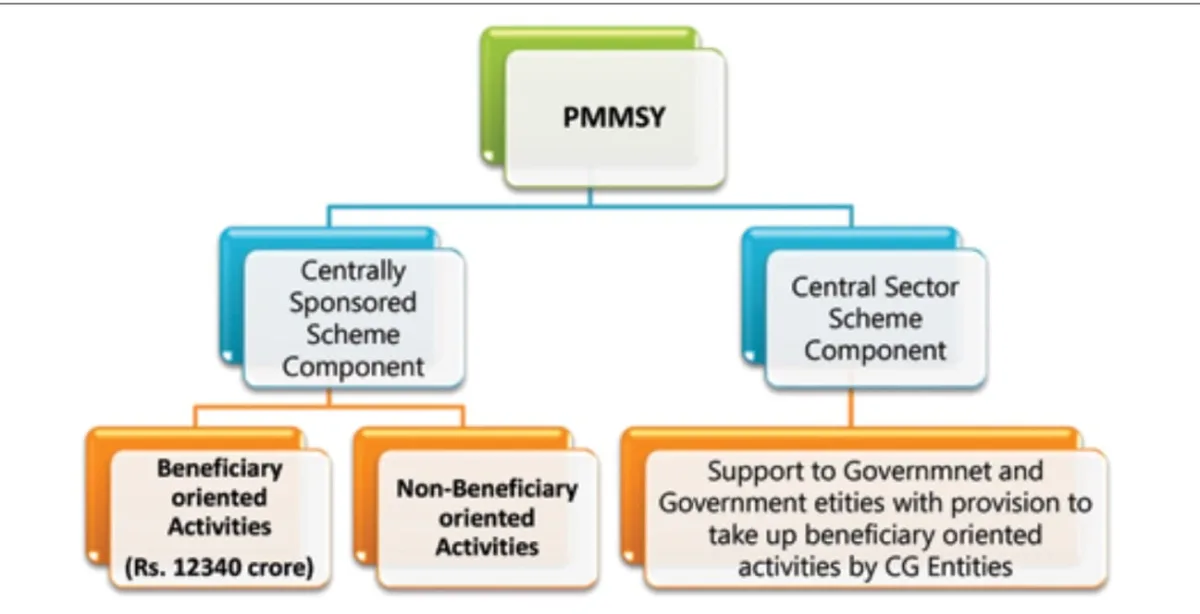
Centrally Sponsored Scheme (CSS)
Non-Beneficiary Oriented Sub-components/Activities:
For sub-components/activities not directly benefiting individuals under the CSS component and implemented by States/UTs, the project/unit cost is shared between the Centre and State as outlined below:
- North Eastern & Himalayan States: 90% Central share and 10% State share.
- Other States: 60% Central share and 40% State share.
- Union Territories (with legislature and without legislature): 100% Central share.
Beneficiary-Oriented Sub-components/Activities:
For beneficiary-oriented activities implemented by States/UTs, the combined financial assistance from the Centre and State/UTs governments is limited to 40% of the project/unit cost for the General category and 60% for SC/ST/Women. The financial assistance is then divided between the Centre and State/UTs according to the following ratios:
- North Eastern & Himalayan States: 90% Central share and 10% State share.
- Other States: 60% Central share and 40% State share.
- Union Territories (with legislature and without legislature): 100% Central share (No UT Share).
| Total | Centre Share | State Share | Beneficiary Share | |
| (A) Central Sector Scheme | Rs. 1,720 crore | Rs. 1,720 crore | – | – |
| (B) Centrally Sponsored Scheme (CSS) | Rs. 18,330 crore | Rs. 7,687 crore | Rs. 4,880 crore | Rs. 5,763 crore |
| Beneficiary-oriented activities | Rs. 11,990 crore | Rs. 3,878 crore | Rs. 2,349 crore | |
| Non-beneficiary-oriented activities | Rs. 6,340 crore | Rs. 3,809 crore | Rs. 2,531 crore | |
| Total (A)+(B) | Rs. 20,050 crore | Rs. 9,407 crore | Rs. 4,880 crore | Rs. 5,763 crore |
Pradhan Mantri Matsya Sampada Yojana Beneficiaries
- Individuals engaged in fishing activities.
- Individuals involved in fish farming.
- Workers and vendors associated with the fish industry.
- Corporations focused on fisheries development.
- Self Help Groups (SHGs) and Joint Liability Groups (JLGs) operating within the fisheries sector.
- Cooperative entities involved in fisheries.
- Federations dedicated to fisheries.
- Entrepreneurs and private companies in the fisheries sector.
- Organizations and companies formed by Fish Farmers (FFPOs/Cs).
- Individuals belonging to Scheduled Castes (SCs), Scheduled Tribes (STs), women, and differently-abled persons involved in fisheries.
- State Governments/Union Territories and their affiliated entities.
- State Fisheries Development Boards (SFDB).
- The Central Government and its affiliated entities.
Pradhan Mantri Matsya Sampada Yojana Documents Required
- Aadhaar Card
- PAN Card
- Bank Account Details
- Business Registration Certificate
- Project Report
- Land Documents: This includes documents such as land lease agreements, land ownership documents, or a No Objection Certificate (NOC) from the landowner if the project involves land.
- Partnership Deed or Memorandum of Association (MOA)
Note: The specific documents required may vary depending on the nature and type of the project. It is advisable to consult with the relevant authorities or refer to the official PMMSY website for the comprehensive list of documents necessary for a specific project and the application process.
Pradhan Mantri Matsya Sampada Yojana Application Process
For the Centrally Sponsored Scheme Component of PMMSY, beneficiaries must submit their self-contained proposals or detailed project reports (DPR) following the operational guidelines of PMMSY. These submissions should be made to the District Fisheries Officer in their domicile district or the district of the respective States/Union Territories where they plan to undertake fisheries development activities.
Concerning the Central Sector Scheme Component of PMMSY, project proposals should be sent to the Department of Fisheries, Government of India, using the details provided below:
- The Secretary
- Department of Fisheries
- Ministry of Fisheries, Animal Husbandry, and Dairying
- Government of India
- Room No-221, Krishi Bhawan
- New Delhi – 110 001
- Email: [email protected]
Please note that stakeholders (intended beneficiaries) should consult the District Fisheries Officer in the district of the respective States/Union Territories where they intend to carry out fisheries development activities for guidance on the submission process.
Also Read:
PM JANMAN Scheme with Rs 24,000 Cr Budget Launched for Tribals of India
PM Schools for Rising India | 63 PM SHRI Schools Launched in Odisha
